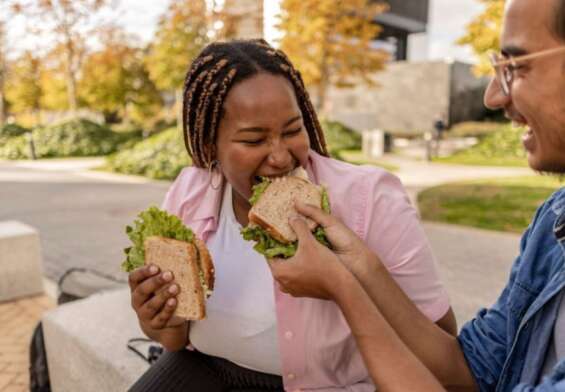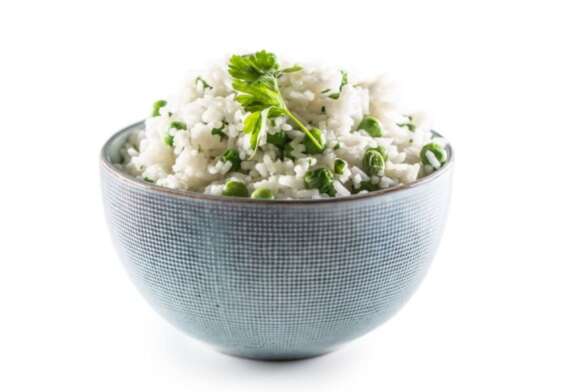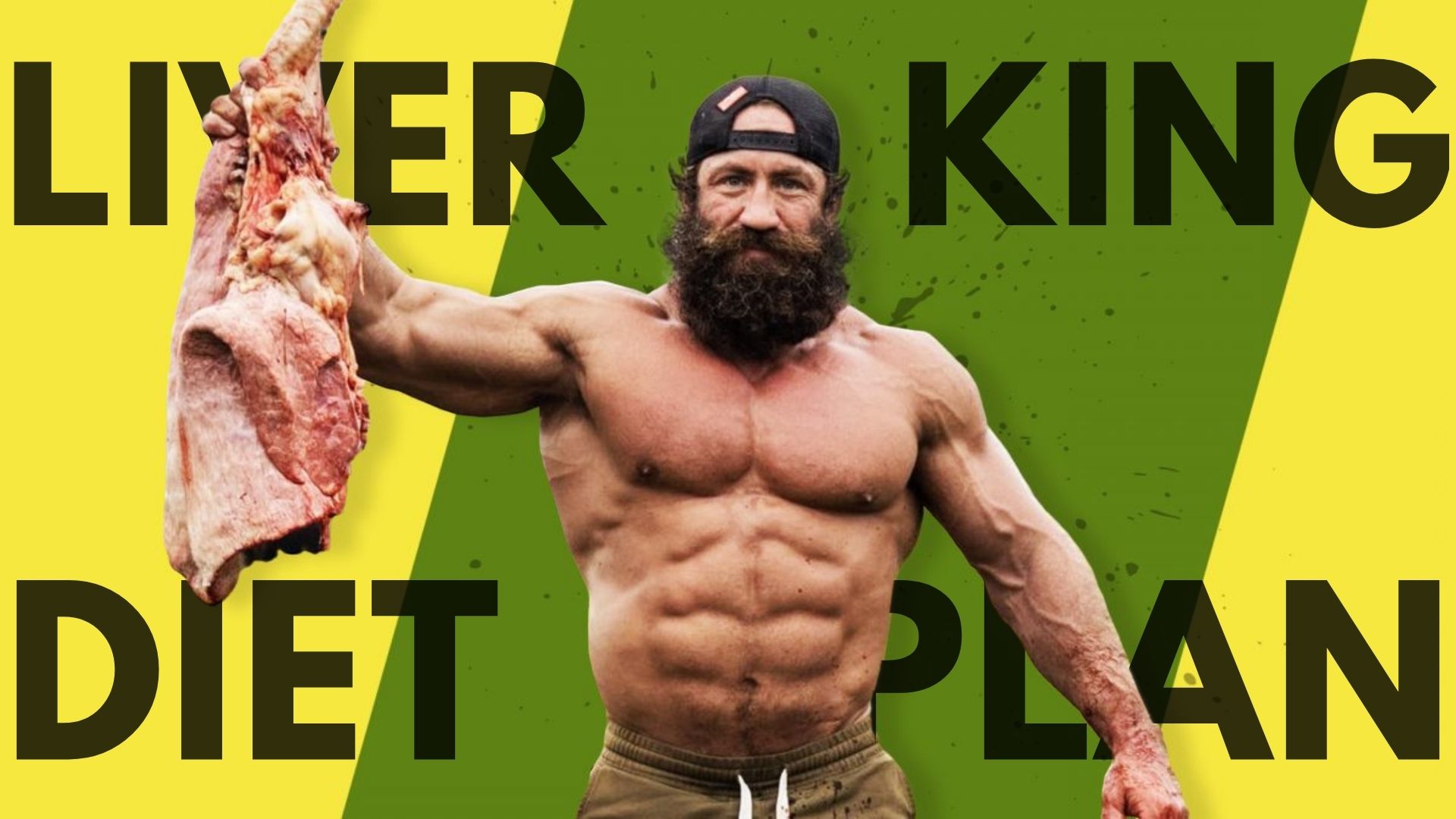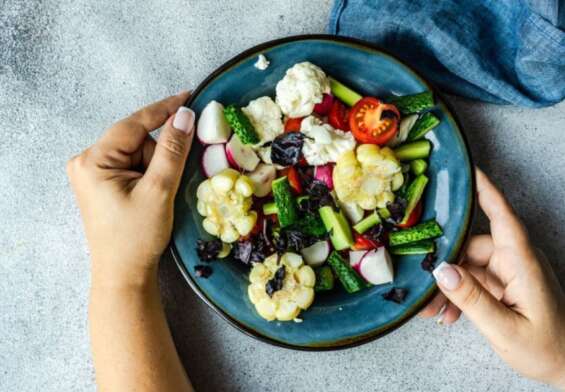
Slow-Carb Diet: Lose Weight with Slow-Digesting Carbs
The Slow-Carb Diet is a popular weight loss program that has been gaining traction in recent years. The diet is based on the concept of eating a balanced diet of macro-nutrients (protein, carbohydrates, and fats) in a slow and steady manner to reduce cravings and increase energy. It also encourages followers to focus on eating whole foods and avoiding processed foods, such as refined sugars and grains. The Slow-Carb Diet has been found to be effective for weight loss and can be a great way to jump-start a healthier lifestyle.
What You Need to Know Before Starting a Slow-Carb Diet
Are you considering starting a slow-carb diet? Before you jump into this way of life, there are a few things you should know.
First of all, you should know that slow-carb diets are all about eating unprocessed foods and cutting out as much sugar and refined carbs as possible. It’s a great way to shed a few pounds, but it’s also a lifestyle. You’ll need to make some changes in order to stick with it.
Second, you should be aware that slow-carb diets can be quite restrictive. You’ll be cutting out a lot of the foods you’re used to eating, such as bread, pasta, and processed snacks. It can be a challenge to stick with it, but it’s worth it in the end.
Third, don’t forget to include plenty of protein and healthy fats in your diet. You’ll need to make sure you’re getting enough of both in order to stay full and satisfied.
Fourth, don’t forget to give yourself a break every now and then. Slow-carb diets don’t have to be all work and no play. If you want to indulge in a treat every once in a while, go for it! Just make sure it’s within your calorie limit.
Finally, be prepared to have some fun! Slow-carb diets can be a lot of work, but they can also be very rewarding. So don’t forget to enjoy the journey and have some fun along the way.
So if you’re thinking about starting a slow-carb diet, keep these tips in mind and you’ll be well on your way to success!
How to Prepare Meals That Fit into a Slow-Carb Diet
If you’re looking to get fit and feel fab, the Slow-Carb diet might just be the right fit for you! This diet focuses on eating lean proteins, legumes, and veggies, while avoiding processed foods and sugar. So, how do you make meals that fit into this dietary plan? Here are our top tips for preparing meals that are both delicious and slow-carb friendly!
- Start with lean proteins. This could include things like lean beef, chicken, fish, and eggs. And don’t forget about tofu and tempeh for vegetarian options.
- Add in legumes. We’re talking about beans, peas, and lentils. These are great sources of fiber and protein, and they’re super versatile. Cooked, mashed, or even blended into a dip, legumes are your friend!
- Get creative with veggies. This is the fun part! Add whatever vegetables you like to your meals, such as broccoli, spinach, carrots, peppers, and mushrooms. If you’re feeling adventurous, try some exotic veggies like kohlrabi or okra.
- Don’t forget about spices. Spices are a great way to add flavor to your meal without adding sugar or processed ingredients. Try cumin, paprika, turmeric, and garlic to take your meals up a notch.
- Say goodbye to processed foods. This means no crackers, chips, or packaged snacks. If you’re looking for something crunchy, try roasting nuts or making your own popcorn.
So there you have it! With these tips, you’ll be able to prepare tasty and nutritious slow-carb meals in no time. Bon appétit!
How to Maximize the Benefits of Slow-Carb Eating
Slow-carb eating is becoming a popular way to lose weight, gain energy, and improve overall health. But, if you really want to maximize the benefits of slow-carb eating, there are a few tips you should keep in mind.
First of all, remember to set yourself up for success by planning out your meals ahead of time. That way, when it’s time to eat, you’ll have a delicious, slow-carb-friendly meal ready to enjoy.
Secondly, go slow and steady. Don’t try to rush the process or get too extreme with your dieting. Instead, take it one day at a time and make small adjustments to your diet as you go.
Thirdly, find ways to make slow-carb eating more enjoyable. Try adding variety to your meals by experimenting with new recipes or experimenting with different flavors. Get creative and have fun with your slow-carb meals!
Fourthly, don’t forget to exercise. Exercise is an essential part of any healthy diet, and slow-carb eating is no exception. Try to incorporate some form of physical activity into your daily routine, even if it’s just a short walk.
And lastly, don’t forget to have a sense of humor about it. Slow-carb eating can be a long and difficult process, but if you can look at it with a little bit of humor, it can make the journey a lot more enjoyable. So, good luck and happy slow-carb eating!
Understanding the Role of Protein in a Slow-Carb Diet
When it comes to slow-carb diets, protein is king! While carbohydrates are the main source of energy, protein plays an important role in keeping you feeling full and helping you build lean muscle mass. But don’t worry, you don’t have to be a bodybuilder to reap the benefits of a slow-carb diet—just a little creative planning and protein-packed meals can help you get the results you want.
Here’s the lowdown on the role of protein in a slow-carb diet. Protein helps regulate your blood sugar levels and keeps you feeling full longer. Plus, it helps build and maintain lean muscle mass—which is great if you’re looking to slim down and tone up. That said, it’s important to get the right amount of protein each day. Too little, and your body won’t be able to build and maintain muscle. Too much, and you’ll be overloading on calories.
When it comes to slow-carb diets, the key is to get your protein from lean sources such as fish, chicken, turkey, eggs, nuts, and legumes. And don’t forget about plant-based proteins like tofu and tempeh. These are great choices if you’re looking for a vegan or vegetarian diet.
Adding some protein to your slow-carb diet can be fun and creative. Try combining different types of lean proteins with flavorful spices and veggies. Or, whip up a delicious protein smoothie for breakfast. The possibilities are endless!
So, if you’re looking to get the most out of your slow-carb diet, don’t forget to include protein in your meal plan. It’ll help keep you feeling full, give you energy, and help you build and maintain lean muscle mass. Now that’s something to celebrate!
The Pros and Cons of Slow-Carb Dieting
Pros of Slow-Carb Dieting
- You won’t have to worry about being judged for being on a diet since nobody even knows what slow-carb dieting is.
- You get to eat a lot of beans and legumes, which are very nutritious and will make your house smell great.
- You don’t have to worry about counting calories, since you’re only eating foods that are known to be healthy.
- You’ll get to eat a lot of food but still lose weight, because it’s all about portion control.
Cons of Slow-Carb Dieting
- You may develop a slight addiction to beans, which could lead to a lot of farting.
- You may get bored with the foods you’re eating, since you’re limited to just a few types.
- You may have trouble finding the right slow-carb diet foods at the grocery store, since they’re not as popular as other items.
- You may feel like you’re missing out on all the delicious treats that other people are eating.
What to Include in Your Slow-Carb Shopping List
- Canned beans – Black, pinto, garbanzo, and cannellini are all great for slow-carb meals.
- Lentils – These little nutrition powerhouses are a great source of protein and fiber, and they cook up fast.
- Whole-grain oats – Perfect for oatmeal, overnight oats, or adding to baked goods.
- Brown rice – A delicious and versatile base for slow-carb dishes.
- Quinoa – Another protein-packed grain that cooks quickly and tastes amazing.
- Veggies – Load up on broccoli, kale, spinach, peppers, onions, carrots, and whatever else strikes your fancy.
- Fruits – Berries, apples, bananas, and pears are all great choices for slow-carb meals.
- Nuts and seeds – Walnuts, almonds, pumpkin seeds, and chia seeds are all healthy and delicious.
- Lean proteins – Chicken, turkey, fish, and eggs are all great sources of protein.
- Herbs and spices – Garlic, cumin, oregano, and turmeric are all tasty and nutritious additions to slow-carb dishes.
- Dark chocolate – Because who doesn’t love a little indulgence?
Slow-Carb Diet Tips for Beginners
- Don’t be intimidated by the slow-carb diet. It’s really not as complicated as it sounds!
- Start small. Start by simply removing processed and high-sugar foods from your diet.
- Think ahead. Meal-prepping is your friend. Try to have some slow-carb meals ready to go in the fridge or freezer so you’re not tempted to grab something unhealthy.
- Stay hydrated. Drinking plenty of water will help keep you full and energized throughout the day.
- Don’t worry about the small stuff. It’s OK to indulge in the occasional cheat meal or snack. Just be sure to get right back on track afterwards.
- Find a buddy. Find someone who is also trying the slow-carb diet and have them help you stay accountable.
- Have fun with it. Try out different recipes and experiment with spices and seasonings to make your slow-carb meals interesting and delicious.
How to Make Eating Out Easier on a Slow-Carb Diet
Are you stuck eating out on a slow-carb diet and feeling a bit like you’re stuck between a rock and a hard place? Don’t worry, we’ve got you covered! Here are a few tips to make eating out on a slow-carb diet a little bit easier.
Be the Avocado Whisperer. Avocados are your friend when you’re eating out on a slow-carb diet. So don’t be afraid to ask your server to add a few slices to your meal. Just make sure to whisper it in their ear so they don’t think you’re some kind of avocado-obsessed weirdo.
Don’t be afraid to get creative. You don’t have to limit yourself to the pre-existing menu items. Ask the chef to make you something special with the ingredients that are slow-carb friendly.
Skip the bread and pasta. Most restaurants serve bread and pasta as a side dish, but on a slow-carb diet, these are no-nos. So, if you want to keep it slow-carb friendly, skip the bread and pasta and opt for a side of veggies instead.
Drink wisely. Alcohol can be a diet-killer, so watch what you order. Stick to light beer and dry wines and try to avoid sugary drinks like margaritas and sweet wines.
Don’t forget the dessert. While you might be tempted to skip dessert, don’t forget that you can still indulge in some slow-carb friendly treats. Opt for Greek yogurt with berries or dark chocolate.
Eating out on a slow-carb diet doesn’t have to be a pain. Just remember to be creative and make smart choices and you’ll be able to enjoy your meal without ruining your diet. Bon apetit!
How to Avoid Common Slow-Carb Diet Mistakes
If you’re looking to get in shape, the Slow-Carb Diet is a great way to go. However, it’s not without its pitfalls. To avoid common mistakes, here are some tips to help you stay on track.
First, don’t be fooled by all the “low-carb” foods out there. Just because something is labeled “low-carb” doesn’t mean it’s good for the Slow-Carb Diet. Make sure to read labels and check the sugar, carbohydrate, and fat content of any food you’re considering.
Second, don’t forget your legumes! A lot of people overlook legumes when they’re on the Slow-Carb Diet, but they’re actually an essential part of the plan. Legumes like lentils, peas, and beans are low in carbs and high in protein, making them perfect for a slow-carb meal.
Third, don’t be tempted by cheat days. The Slow-Carb Diet allows for one cheat day a week, but it’s important to be mindful of what you’re eating. Try to stick to healthier options and don’t overindulge.
Finally, don’t forget to stay hydrated. The Slow-Carb Diet can be a bit of a shock to the system, so it’s important to keep yourself hydrated. Make sure you’re drinking plenty of water throughout the day to keep your energy levels up and your body functioning properly.
So there you have it – four tips to help you avoid common Slow-Carb Diet mistakes. With a little bit of knowledge and a whole lot of willpower, you’ll be on your way to a healthier, happier you!
What to Do When You’re Craving Sweets on a Slow-Carb Diet
If you’re following the slow-carb diet, but still have a hankering for something sweet, there are a few things you can do to curb that craving.
First of all, distract yourself. Take a walk, read a book, watch a movie, or do some other activity that will take your mind off of the desire for sugary treats.
If that doesn’t work, try to make a healthier alternative. There are plenty of recipes online for just about any type of sweet treat you can imagine, that are low in sugar and use healthy ingredients like coconut oil, almond flour, and honey.
If all else fails, indulge in a small portion of your favorite sweet treat. Instead of a big slice of cake, opt for a cupcake or a few squares of dark chocolate. Even if you do take in some extra carbs and sugar, it won’t ruin your diet if you do it in moderation.
Finally, remember that the slow-carb diet isn’t meant to be a punishment. Don’t beat yourself up if you give in to your cravings every now and then—just make sure it doesn’t become a habit. With some self-control, you can stick to your diet and still have the occasional sweet treat!
How to Make a Slow-Carb Diet Sustainable and Enjoyable
Are you ready to start a slow-carb diet but worried about making it sustainable and enjoyable long term? Don’t worry – you don’t have to spend every meal eating plain, boring foods. Here are some tips to make your slow-carb diet sustainable and enjoyable.
First, get creative with your food. Slow-carb diets are all about eating whole foods like legumes, nuts, and lean proteins. But that doesn’t mean you can’t be creative with the flavors and spices you use! Experiment with different herbs and spices to make your meals flavorful and enjoyable.
Second, find substitutes for your favorite foods. If you’re a fan of pizza or burgers, try making a low-carb version of these classics. You can also use cauliflower or other vegetables to make mashed potatoes or pizza crusts.
Third, try new recipes. There are tons of slow-carb recipes out there, so try out a few and see what you like. There’s no harm in trying something new – you might just find a new favorite meal!
Fourth, don’t be too hard on yourself. A slow-carb diet isn’t meant to be perfect. If you slip up and have a craving for something that’s not on your diet, don’t beat yourself up over it. Just try to get back on track quickly and don’t let it derail your progress.
Finally, remember that slow-carb diets aren’t meant to be a punishment. They’re about making long term changes to your lifestyle that will help you achieve your health and fitness goals. So enjoy the process and don’t be too hard on yourself!
Conclusion
The Slow-Carb Diet is an effective way to lose weight, build muscle, and increase energy levels. It is a balanced approach to eating that provides the body with enough nutrients to stay healthy. It eliminates the need for restrictive diets and focuses on eating whole, unprocessed foods. This makes it a great option for those looking to take control of their health and lose weight in a sustainable way.











